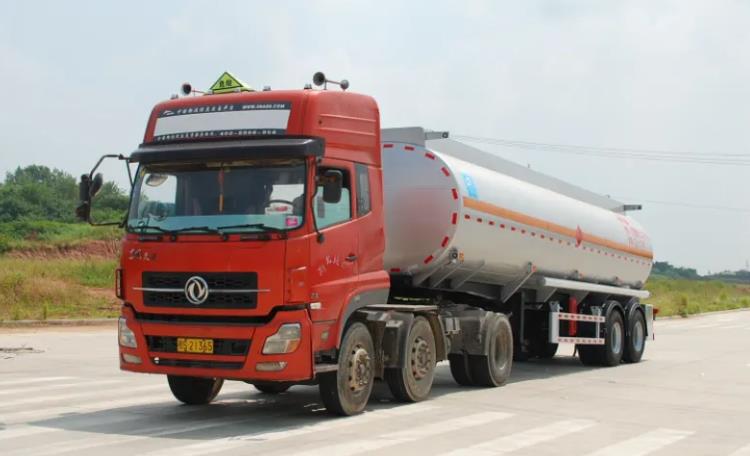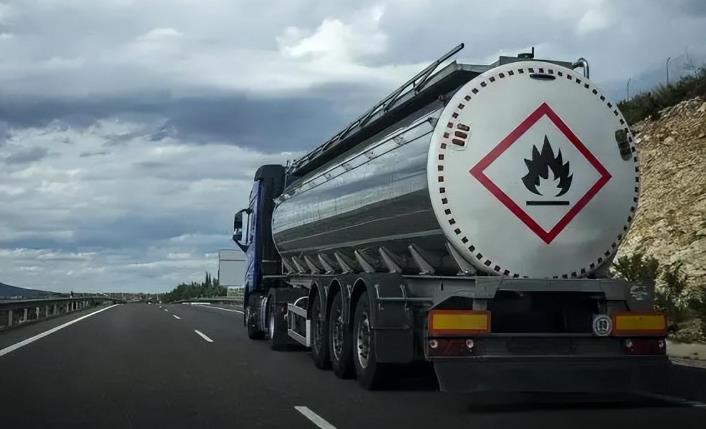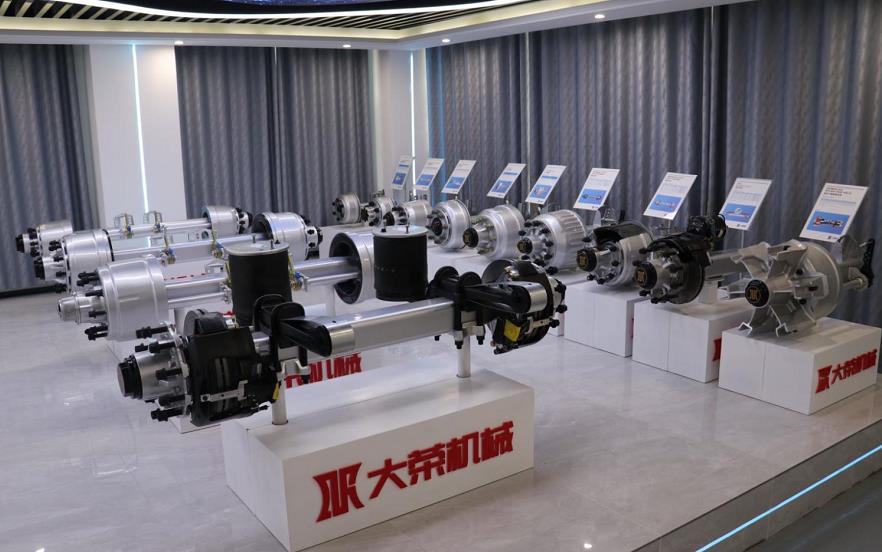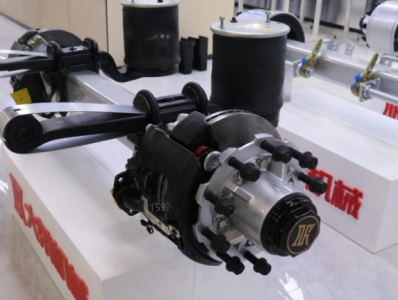The transport of hazardous chemicals needs to be regulated
With the continuous improvement of domestic industrial development level, the proportion of petrochemical industry in the economy is increasing, and the transportation demand of hazardous chemicals is becoming more and more vigorous. The transportation of hazardous chemicals is a special transportation, with its own certain safety risks, so the relevant audit procedures, qualification conditions, transportation supervision is very strict.

Today, DARO trailer axles will take a detailed inventory of the knowledge that needs to be understood in the transportation of hazardous chemicals.
Conditions for the transportation of hazardous chemicals:
1. Driver:
Valid driving license issued by public security department;
The qualification certificate for the transportation of dangerous goods for commercial road transport drivers issued by the competent transportation department.
2. Vehicle:
The road transport certificate issued by the competent transportation department shall be affixed with the special seal for the transport of dangerous goods on the road;
Valid driving license issued by the vehicle administration department of public security;
Valid tank quality inspection certificate issued by the quality and technical supervision department;
Road transport permit for highly toxic chemicals (transport of highly toxic chemicals);
As required, hang the traffic department issued by the danger sign lights, plates.
3. Escort:
Road dangerous goods operation certificate (Escort Certificate) issued by the competent transportation department.

Technical requirements for hazardous chemical transport vehicles:
1, disc trailer axle and ABS system. The front axle of dangerous goods vehicle must be equipped with disc brake, and the whole vehicle must be equipped with ABS system;
2. Exhaust pipe. The engine exhaust pipe of dangerous goods transport vehicle should be in front, and exhaust spark extinguisher should be installed at the tail end of the exhaust pipe to cool the motor vehicle exhaust gas;
3. Vehicle speed. The maximum speed of dangerous goods transport vehicles shall not exceed 80 km/h;
4, emergency cutting device. The oil tanker is installed at the liquid and gas interface of liquefied petroleum gas or liquefied gas tanker, and the function is that when the medium leaks, the valve can be closed by itself;
5. Warning signs. Dangerous goods transport vehicles must be painted with safety notices, explosive diamond-shaped signs, danger lights, and orange "explosive" characters;
6. Electrostatic conductive rubber drag belt. Dangerous goods vehicles need to be installed on the bottom frame of the electrostatic conductive rubber tow belt;
7, traffic recorder, cargo compartment ventilation design, ion smoke fire detector, electrostatic conductive rubber plate, antiexplosion container and other accessories installation, dangerous goods vehicles are also much higher than ordinary trailer requirements.

Can hazardous chemicals trucks transport general cargo?
Tank type special vehicles or special vehicles for the transport of toxic, infectious and corrosive dangerous goods shall not be used for the transport of general goods. Other dangerous goods transport vehicles can be used to transport general goods if they have met certain conditions, such as cleaning and killing of dangerous goods vehicles or after hazard elimination treatment and inspection, and shall not be mixed with general goods.
Can dangerous chemicals be transported by ordinary vehicles?
The answer is no. According to Article 56 of the Provisions on the Administration of Road Transport of Dangerous Goods, in violation of these provisions, one of the following circumstances shall be ordered by the road transport management authority at or above the county level to stop the transport operation, and if there are illegal gains, the illegal gains shall be confiscated and a fine of not less than 2 times but not more than 10 times the illegal gains shall be imposed; If there are no illegal gains or the illegal gains are less than 20,000 yuan, a fine of not less than 30,000 yuan but not more than 100,000 yuan shall be imposed; If the case constitutes a crime, criminal responsibility shall be investigated according to law:
(1) engaging in road transport of dangerous goods without obtaining the road transport permit;
(2) using invalid, forged, altered, cancelled and other invalid road dangerous goods transport license to engage in road dangerous goods transport;
(3) engaging in road transport of dangerous goods beyond the permitted items;
(4) Non-operational road dangerous goods transport unit engaged in road dangerous goods transport business.
Is the shipper liable for misstating or concealing the type of goods?
The answer is yes. If the shipper does not inform the driver of the cargo, it needs to bear the corresponding legal responsibility.
According to Article 29 of the "Road Dangerous Goods Transport Management Provisions", the shipper of dangerous goods shall properly package and set up signs on the outer package in strict accordance with the relevant provisions of the State, and explain to the carrier the name of the dangerous goods, quantity, hazard, emergency measures, etc. If an inhibitor or stabilizer needs to be added, the shipper shall add it in accordance with the regulations and inform the carrier of the relevant precautions.
If the shipper of dangerous goods consigns hazardous chemicals, it shall also submit safety technical instructions and safety labels that are completely consistent with the hazardous chemicals consigned.
According to the Provisions on the Administration of the Transport of Dangerous Goods on the Road, Article 60, item 2: The shipper does not explain to the carrier the type, quantity, dangerous characteristics and emergency measures for the occurrence of dangerous situations of the hazardous chemicals consigned, or fails to properly package the hazardous chemicals consigned in accordance with the relevant provisions of the State and set up corresponding marks on the outer package.
In case of violation of the relevant provisions, the road transport administration at or above the county level shall order correction and impose a fine of not less than 50,000 yuan but not more than 100,000 yuan, and those who refuse to make corrections shall be ordered to stop production and business for rectification; If the case constitutes a crime, criminal responsibility shall be investigated according to law.
If the circumstances are more severe, there is a realistic possibility of accidents leading to major casualties and other serious consequences, endangering public safety, then the driver, escort and logistics person in charge may also be detained by criminal compulsory measures, the investigation of their suspected illegal acts, face fixed-term imprisonment.

Of course, if the driver illegally loaded dangerous chemicals, regardless of whether it is out of its intention or knowledge, it will also bear the corresponding penalties.
Can hazardous chemical cargoes be mixed?
The answer is no. Vehicles engaged in the transport of hazardous chemicals are not to say that as long as they have the appropriate qualifications to load hazardous chemicals, but also to comply with the relevant transport provisions, especially some hazardous chemicals may exist chemical reactions, can not be mixed, drivers, escorts, managers and shippers need to master enough knowledge of hazardous chemicals.
According to Article 114 (1) of the Criminal Law of the People's Republic of China [Crime of endangering public security by dangerous means] : Whoever endangers public security by other dangerous means, if no serious consequences have been caused, shall be sentenced to fixed-term imprisonment of not less than three years but not more than 10 years.
Article 133: Whoever drives a motor vehicle on a road under any of the following circumstances shall be sentenced to criminal detention and concurrently be fined:
(1) pursuing competitive driving in a bad way;
(2) driving a motor vehicle while intoxicated;
(3) Engaged in school bus business or passenger transport, seriously exceeding the rated passengers, or seriously exceeding the prescribed speed;
(4) Transporting hazardous chemicals in violation of the regulations on the safety administration of hazardous chemicals, endangering public safety.
If the owner or manager of a motor vehicle is directly responsible for the acts in item 3 or 4 of the preceding paragraph, he shall be punished in accordance with the provisions of the preceding paragraph.
There are nine categories of hazardous chemicals:
1, explosives, such as ammonium nitrate explosives, echelon, etc.
2, flammable and explosive gas.
3, flammable liquids, such as paint, banana water, gasoline, kerosene, ethanol, methanol, acetone, toluene, xylene, solvent oil, benzene, ethyl acetate, butyl acetate, etc.
4, flammable solids, substances prone to spontaneous combustion, substances that release flammable gases in contact with water.
5. Oxidizing substances and organic peroxides.
6. Toxic and infectious substances.
7. Radioactive material.
8, corrosive substances, such as hydrochloric acid, sulfuric acid, nitric acid, phosphoric acid, hydrofluoric acid, ammonia, sodium hypochlorite solution, formaldehyde solution, sodium hydroxide, potassium hydroxide, etc.
9. Miscellaneous hazardous substances and articles, including those harmful to the environment.
At present, China's management of the transportation of hazardous chemicals is extremely strict, and the relevant penalty regulations are also heavier, to a certain extent, it is also in order to improve the safety awareness of hazardous chemical transport drivers, cautious driving, so that hazardous chemical transport enterprises bear more social responsibilities, and ensure transportation safety to a greater extent.







